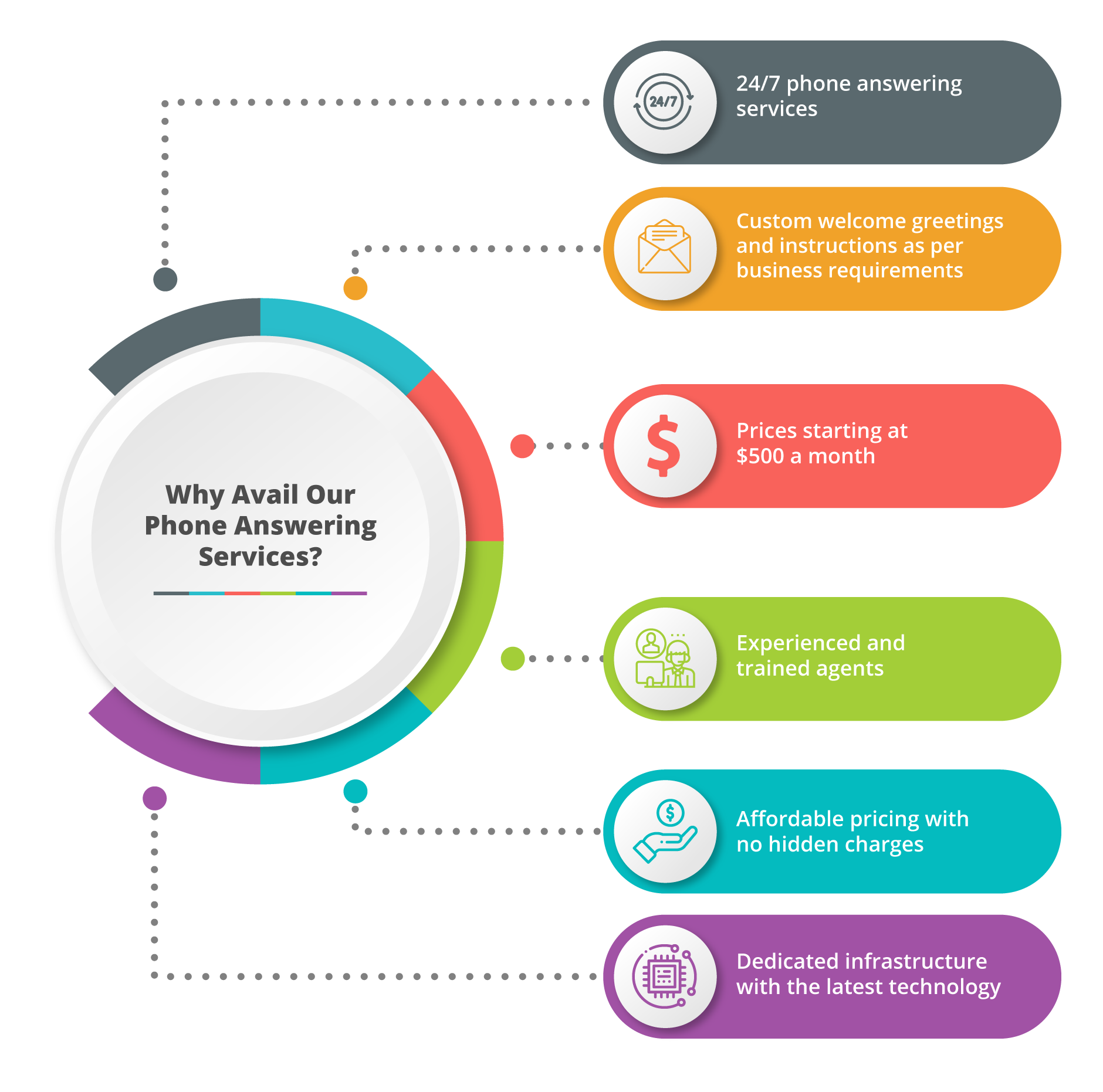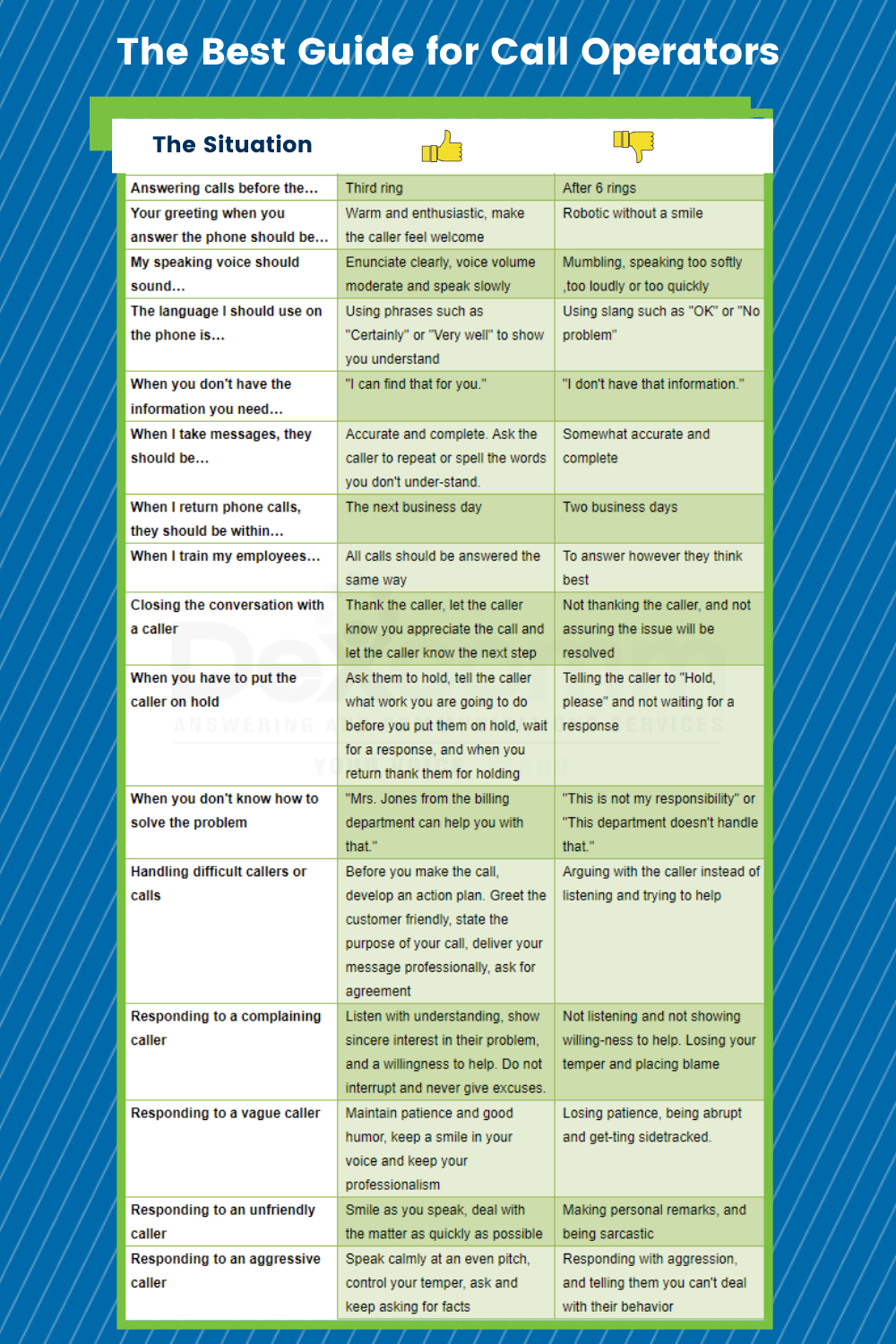All Categories
Featured
Table of Contents
- – What Is The Best Outsource Answering Service Co...
- – Who Is The Best What Is An Answering Service? ...
- – What Is The Best Professional Call Answering S...
- – How Do I Choose A Answering Adelaide - Phone ...
- – What Is The Best What Is An Answering Service...
- – Best Virtual Assistant Call Answering Servic...
What Is The Best Outsource Answering Service Company Sri Lanka To Buy Right Now?
This device and its successors were developed by Sava Jacobson, an electrical engineer with a personal consulting service. While early answering devices used magnetic tape technology, most modern equipment utilizes solid state memory storage; some devices use a mix of both, with a solid-state circuit for the outbound message and a cassette for the incoming messages.
"toll conserving" below) (answering service). This is beneficial if the owner is evaluating calls and does not want to talk with all callers. In any case after going, the calling party needs to be notified about the call having actually been answered (for the most part this starts the charging), either by some remark of the operator, or by some welcoming message of the TAD, or addressed to non-human callers (e.
This holds especially for the Little bits with digitally stored welcoming messages or for earlier devices (before the increase of microcassettes) with a special limitless loop tape, separate from a second cassette, devoted to recording. There have actually been answer-only devices without any recording capabilities, where the greeting message needed to inform callers of a state of existing unattainability, or e (reception services).
Who Is The Best What Is An Answering Service? Company?

about accessibility hours. In tape-recording Littles the welcoming generally consists of an invitation to leave a message "after the beep". A voice mail that uses a microcassette to tape-record messages On a dual-cassette answerphone, there is an outgoing cassette, which after the specified number of rings plays a pre-recorded message to the caller.

Single-cassette voice mail contain the outbound message at the beginning of the tape and incoming messages on the remaining area. They first play the statement, then fast-forward to the next available space for recording, then tape the caller's message. If there are lots of previous messages, fast-forwarding through them can cause a considerable hold-up.
This beep is often described in the welcoming message, asking for that the caller leave a message "after the beep". TADs with digital storage for the tape-recorded messages do not reveal this hold-up, of course. A little might offer a push-button control facility, whereby the answerphone owner can sound the home number and, by entering a code on the remote telephone's keypad, can listen to recorded messages, or erase them, even when away from home.
What Is The Best Professional Call Answering Services: Everything You ... Company?

Thereby the maker increases the variety of rings after which it addresses the call (normally by two, leading to four rings), if no unread messages are currently kept, however answers after the set number of rings (generally 2) if there are unread messages. This permits the owner to discover whether there are messages waiting; if there are none, the owner can hang up the phone on the, e.
Some devices also allow themselves to be from another location triggered, if they have actually been switched off, by calling and letting the phone ring a certain a great deal of times (typically 10-15). Some company desert calls already after a smaller number of rings, making remote activation difficult. In the early days of TADs an unique transmitter for DTMF tones (dual-tone multi-frequency signalling) was regionally needed for remote control, since the previously used pulse dialling is not apt to convey appropriate signalling along an active connection, and the dual-tone multi-frequency signalling was implemented stepwise.
Any inbound call is not recognizable with regard to these residential or commercial properties in advance of going "off hook" by the terminal devices. So after going off hook the calls must be changed to proper gadgets and just the voice-type is right away available to a human, but possibly, nonetheless should be routed to a LITTLE (e.
How Do I Choose A Answering Adelaide - Phone Answering Services Service?
What if I informed you that you do not have to actually get your gadget when answering a consumer call? Someone else will. So convenient, best? Responding to call doesn't require somebody to be on the other end of the line. Efficient automated phone systems can do the technique just as effectively as a live agent and sometimes even much better.
An automated answering service or interactive voice response system is a phone system that interacts with callers without a live individual on the line - business call answering service. When companies utilize this innovation, customers can get the answer to a concern about your company just by utilizing interactions established on a pre-programmed call circulation.
Although live operators update the client service experience, many calls do not require human interaction. An easy recorded message or directions on how a client can recover a piece of information generally solves a caller's instant requirement - local phone answering service. Automated answering services are a basic and efficient method to direct inbound calls to the ideal individual.
What Is The Best What Is An Answering Service? The Ultimate Guide - Cms In The World Right Now
Notification that when you call a business, either for assistance or item inquiry, the first thing you will hear is a pre-recorded voice welcoming and a series of choices like press 1 for customer support, press 2 for questions, and so on. The pre-recorded alternatives branch out to other options depending upon the customer's selection.
The phone tree system assists direct callers to the ideal individual or department using the keypad on a smart phone. In some instances, callers can use their voices. It deserves keeping in mind that auto-attendant alternatives aren't restricted to the ten numbers on a phone's keypad. As soon as the caller has actually chosen their first choice, you can develop a multi-level auto-attendant that uses sub-menus to direct the caller to the best kind of assistance.
The caller does not need to interact with an individual if the auto-attendant phone system can manage their concern. The automatic service can path callers to a worker if they reach a "dead end" and need help from a live agent. It is expensive to employ an operator or executive assistant.
Best Virtual Assistant Call Answering Service Sales Near Me
Automated answering services, on the other hand, are significantly cheaper and offer significant expense savings at an average of $200-$420/month. Even if you don't have actually dedicated personnel to manage call routing and management, an automatic answering service enhances productivity by enabling your team to focus on their strengths so they can more efficiently spend their time on the phone.
A sales lead routed to customer support is a lost shot. If a customer who has item questions reaches the incorrect department or receives insufficient answers from well-meaning employees who are less trained to handle a particular type of concern, it can be a cause of disappointment and frustration. An automated answering system can decrease the number of misrouted calls, therefore helping your employees make better usage of their phone time while maximizing time in their calendar for other jobs.
With Automated Answering Systems, you can develop a tailored experience for both your staff and your callers. Make a recording of your main welcoming, and merely upgrade it regularly to show what is going on in your company. You can create as many departments or menu alternatives as you desire.
Table of Contents
- – What Is The Best Outsource Answering Service Co...
- – Who Is The Best What Is An Answering Service? ...
- – What Is The Best Professional Call Answering S...
- – How Do I Choose A Answering Adelaide - Phone ...
- – What Is The Best What Is An Answering Service...
- – Best Virtual Assistant Call Answering Servic...
Latest Posts
Cheap Virtual Receptionist Near Me
High-Quality Ai Answering System ( Australia)
Affordable Hospitality Answering Service (Launceston 7250)
More
Latest Posts
Cheap Virtual Receptionist Near Me
High-Quality Ai Answering System ( Australia)
Affordable Hospitality Answering Service (Launceston 7250)